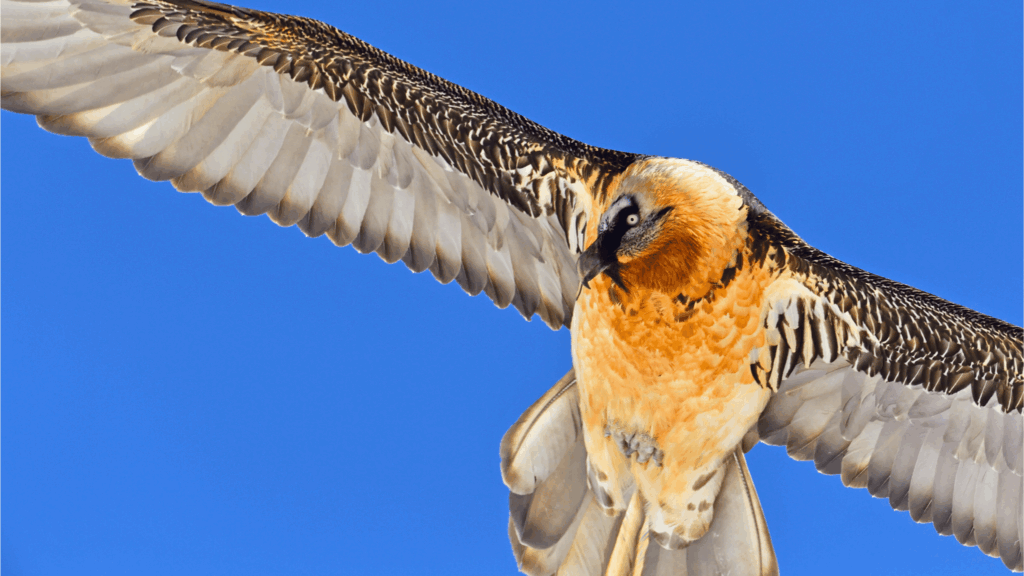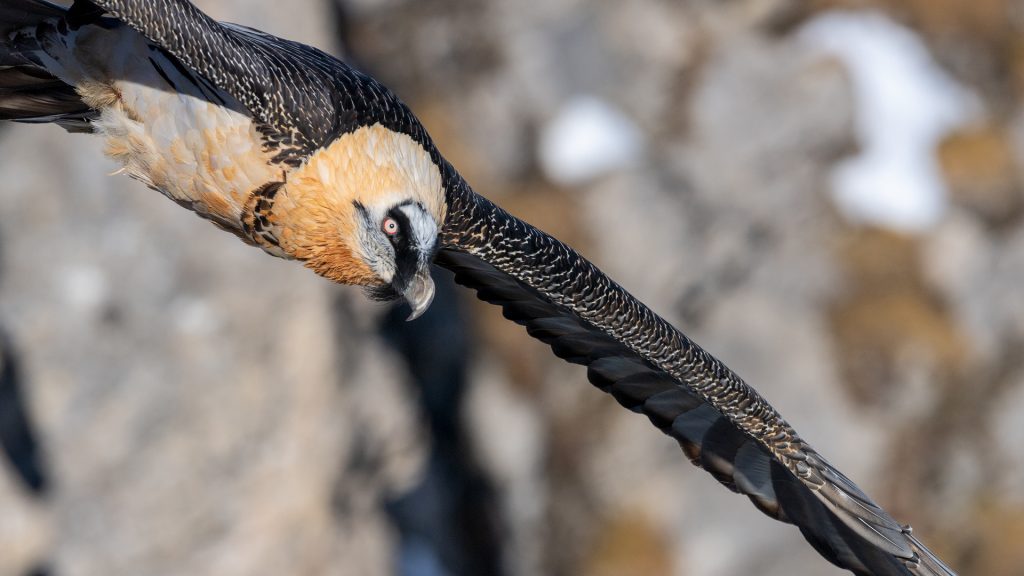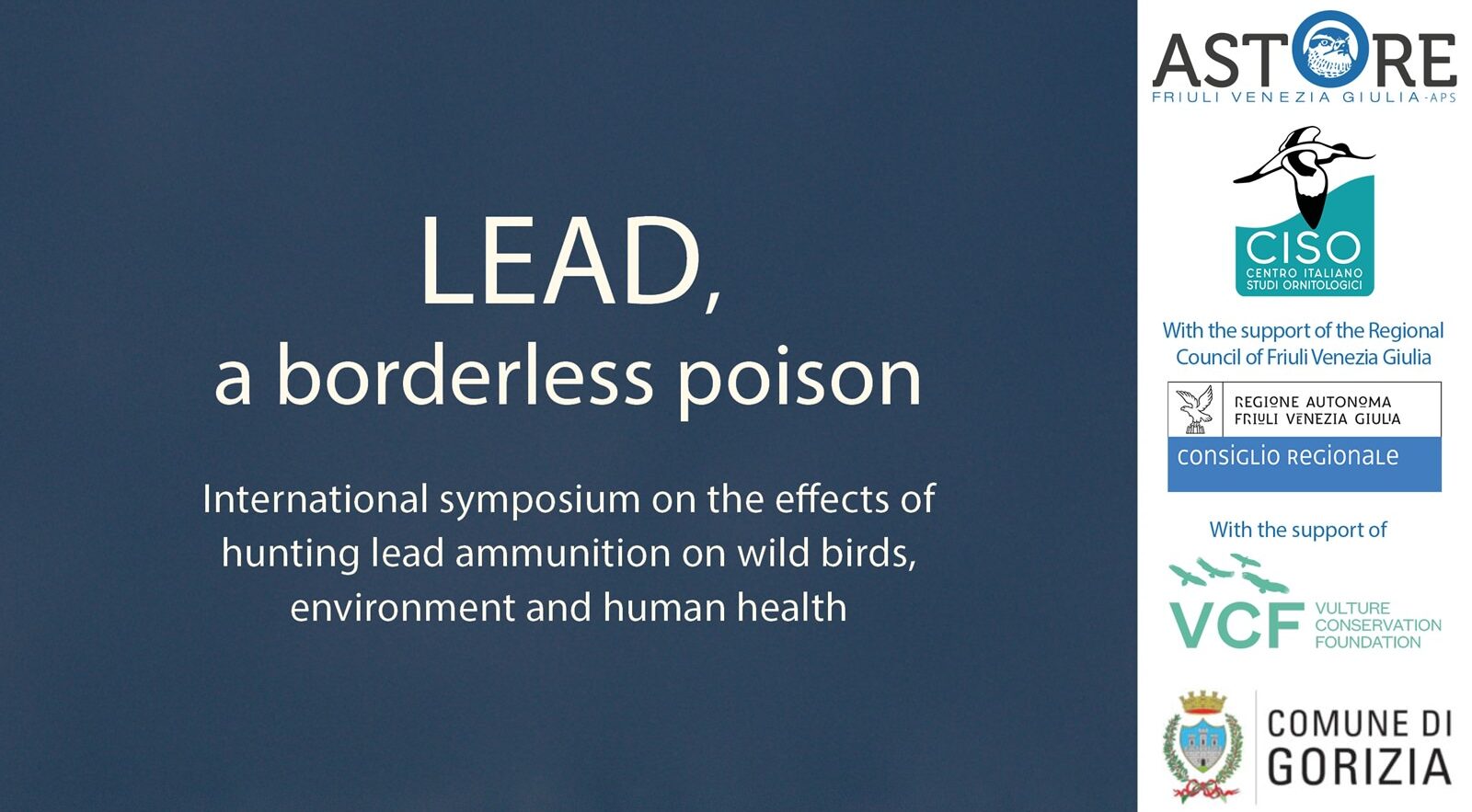In a landmark event for species conservation, a Bearded Vulture chick has successfully hatched and been tagged in the Moncayo massif, located at the easternmost edge of Spain’s Iberian System mountain range. This marks the first successful breeding of the species in the entire Iberian System, a vital natural corridor stretching from Portugal to the Ebro River. Even more significantly, it represents a natural recolonisation from the Pyrenees, after more than a century of absence.

The chick, named Moncayo, hatched in February 2025 from a wild breeding pair: an unmarked adult male and a 10-year-old female known as Ezka, who was tagged as a chick in 2015 in the Roncal Valley (Navarra), part of the western Pyrenees. This successful hatch is a turning point in the recovery of the Bearded Vulture across its historical range on the Iberian Peninsula.
Natural recolonisation after over a century of absence
This breeding success in the Moncayo — a mountainous area shared between Castilla y León and Aragón — is particularly remarkable because it wasn’t the result of any release programme or reintroduction initiative. It happened on its own, as a result of natural movements by the species from the Pyrenees. For decades, conservationists have hoped to see the Bearded Vulture expand southward from its stronghold in the central Pyrenees. Now, that dream is becoming a reality.
Though breeding attempts had occurred in the Moncayo area in recent years — one in Zaragoza in 2020 and another in Soria in 2021 — neither was successful. That changed in 2025, marking the first natural breeding in the region to reach fledging.
Collaboration across borders and mountains
The successful monitoring of the breeding pair was made possible through a coordinated effort between the Junta de Castilla y León, the Government of Aragón, and the Fundación para la Conservación del Quebrantahuesos (FCQ). The nest was under continuous surveillance beginning in December to ensure the birds remained undisturbed during the sensitive incubation and chick-rearing periods.
Recently, the chick was fitted with a GPS transmitter by FCQ technicians, with help from the Soria Environmental Agents’ High-Altitude Intervention Group and a supervising veterinarian. This device will allow conservationists to track Moncayo’s movements, observe habitat preferences, and study interactions with other populations. All of this will generate crucial data to inform future conservation strategies and identify emerging threats early.
Reinforcing the Iberian ecological network
This achievement is about more than just a single bird. The successful breeding in Moncayo elevates the role of the Iberian System as a major ecological corridor — one that could eventually link the Pyrenean Bearded Vulture population with those in the Picos de Europa, Montes Vascos, Sierra de Gredos, and the Sistema Bético (Andalusia and Castilla-La Mancha).
The Bearded Vulture remains classified as Endangered in Spain and Vulnerable on the European Red List, and its long-term survival will depend heavily on genetic exchange and connected habitats.

Recent sightings show that the species is becoming more common across the Iberian System stretching from Moncayo to the Urbión and Cebollera mountain ranges. These observations open the door to the possibility of additional natural recolonisations — and even future breeding — in areas where the Bearded Vulture has been absent for more than a century.
The chick’s name, Moncayo, honours the majestic mountain that borders Castilla y León and Aragón — a place that may soon receive new recognition as a Natural Park on its Sorian slopes. As this young vulture begins to explore its ancestral range, it becomes a powerful symbol of ecological restoration and a living testament to decades of coordinated conservation work.



